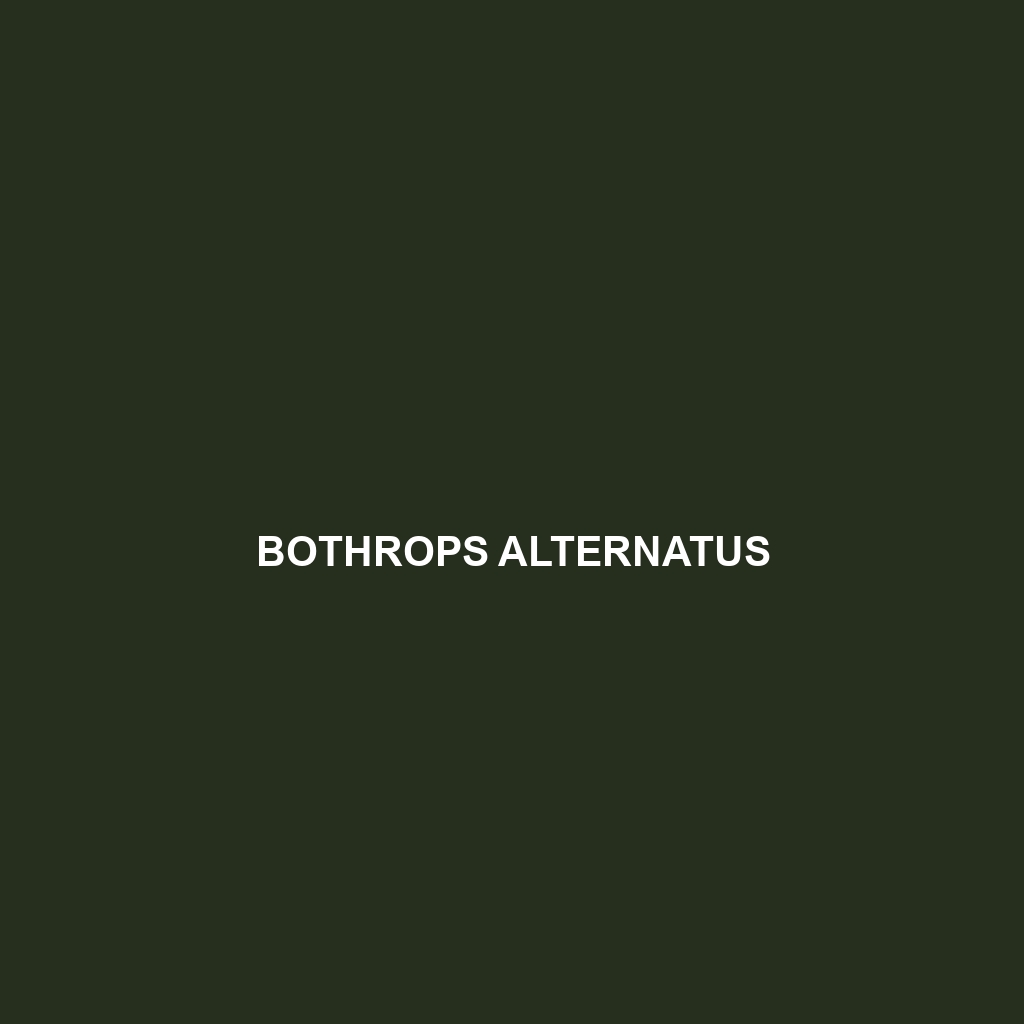Species Description: Bothrops alternatus
Common Name: Bothrops alternatus
Scientific Name: Bothrops alternatus
Habitat: Bothrops alternatus, commonly known as the Argentine pit viper, is primarily found in the tropical and subtropical regions of South America. Its geographic distribution includes areas such as Argentina, Paraguay, and Brazil. This species prefers habitat types such as forests, grasslands, and bushy areas, often near streams and swamps, which provide essential moisture and prey.
Physical Characteristics: Adult Bothrops alternatus typically ranges from 0.6 to 1.2 meters in length, with some individuals exceeding 1.5 meters. They are characterized by their distinctive coloration, which includes various shades of brown, gray, and olive green, marked by dark brown to black bands, making them well-camouflaged against the forest floor. Their bodies are robust and triangular-shaped, with large, vertically elliptical pupils and a prominent pit organ located between the eye and the nostril, enabling them to detect heat.
Behavior: Bothrops alternatus exhibits a primarily nocturnal behavior, becoming active during the night to hunt for prey. They are known to be ambush predators, often remaining motionless and camouflaged until an unsuspecting animal ventures too close. During the day, this species may be found resting in shady spots or hidden within leaf litter, where they rely on their cryptic coloration for protection from predators.
Diet: Bothrops alternatus is a carnivorous species that primarily preys on small mammals, birds, and amphibians. Their diet consists of rodents such as rats and mice, which they capture using their potent venom. The venom, which contains hemotoxins, helps subdue their prey quickly, enabling them to consume meals that are often larger than their head.
Reproduction: The reproductive habits of Bothrops alternatus include ovoviviparity, where the females give birth to live young rather than laying eggs. Breeding often occurs during the warmer months, with females producing 10 to 30 offspring per litter. The young are born fully formed, measuring about 25 cm in length, and display similar coloration to adults which helps them survive in their environment.
Conservation Status: Currently, Bothrops alternatus is listed as ‘Least Concern’ according to the IUCN Red List. However, changes in habitat due to agriculture and deforestation pose potential threats, which could impact their population stability in the future. Conservation efforts are necessary to monitor their habitats and mitigate these risks.
Interesting Facts: An intriguing facet of Bothrops alternatus is its role in traditional medicine in some cultures, where its venom is sometimes studied for medicinal properties. Additionally, its striking appearance and behaviors make it a subject of interest for herpetologists and wildlife enthusiasts alike.
Role in Ecosystem: Bothrops alternatus plays a significant role in its ecosystem as both a predator and prey. By controlling the population of small mammals and birds, it helps maintain ecological balance. Furthermore, as a food source for larger predators such as birds of prey, it contributes to the food web within its habitat.
